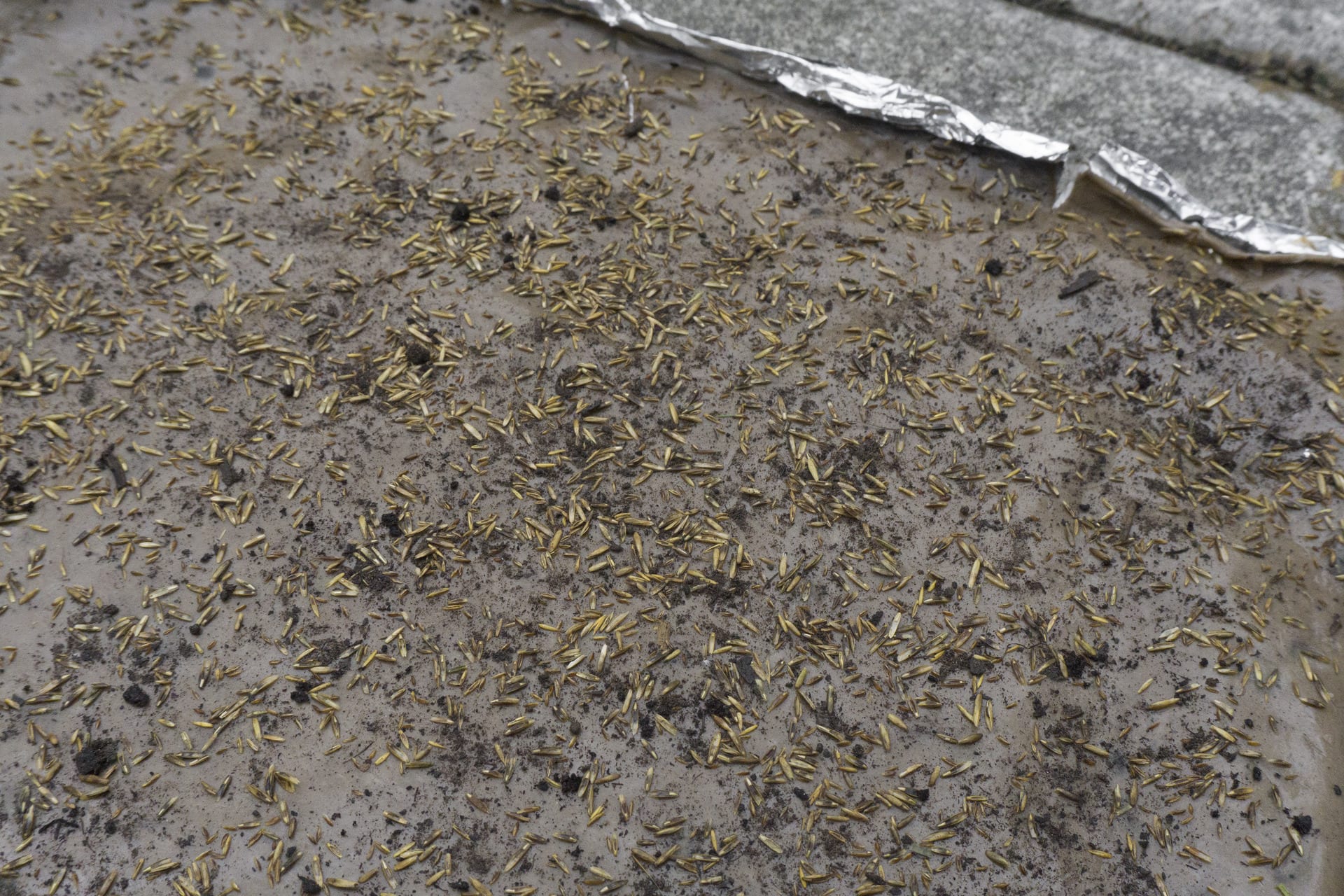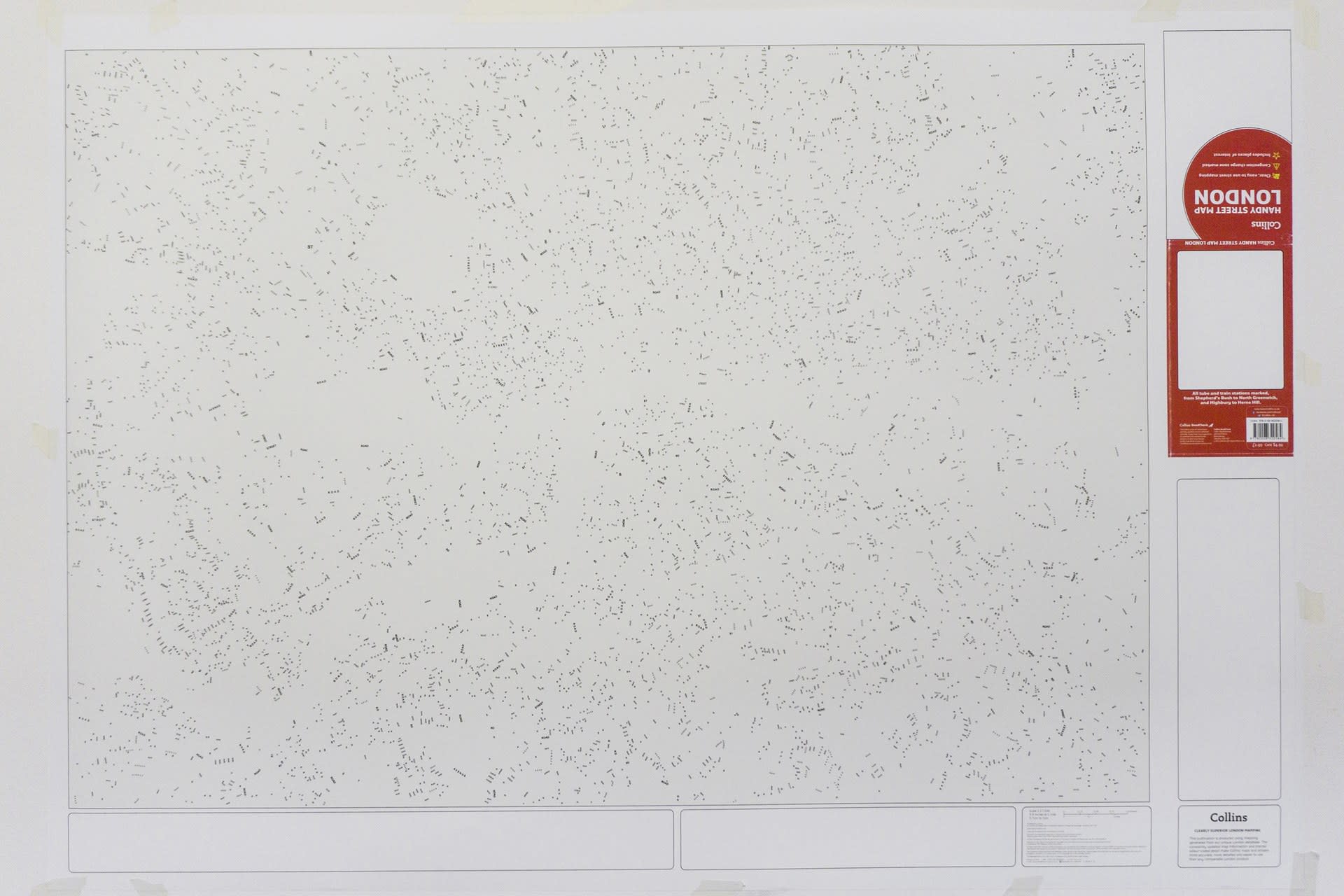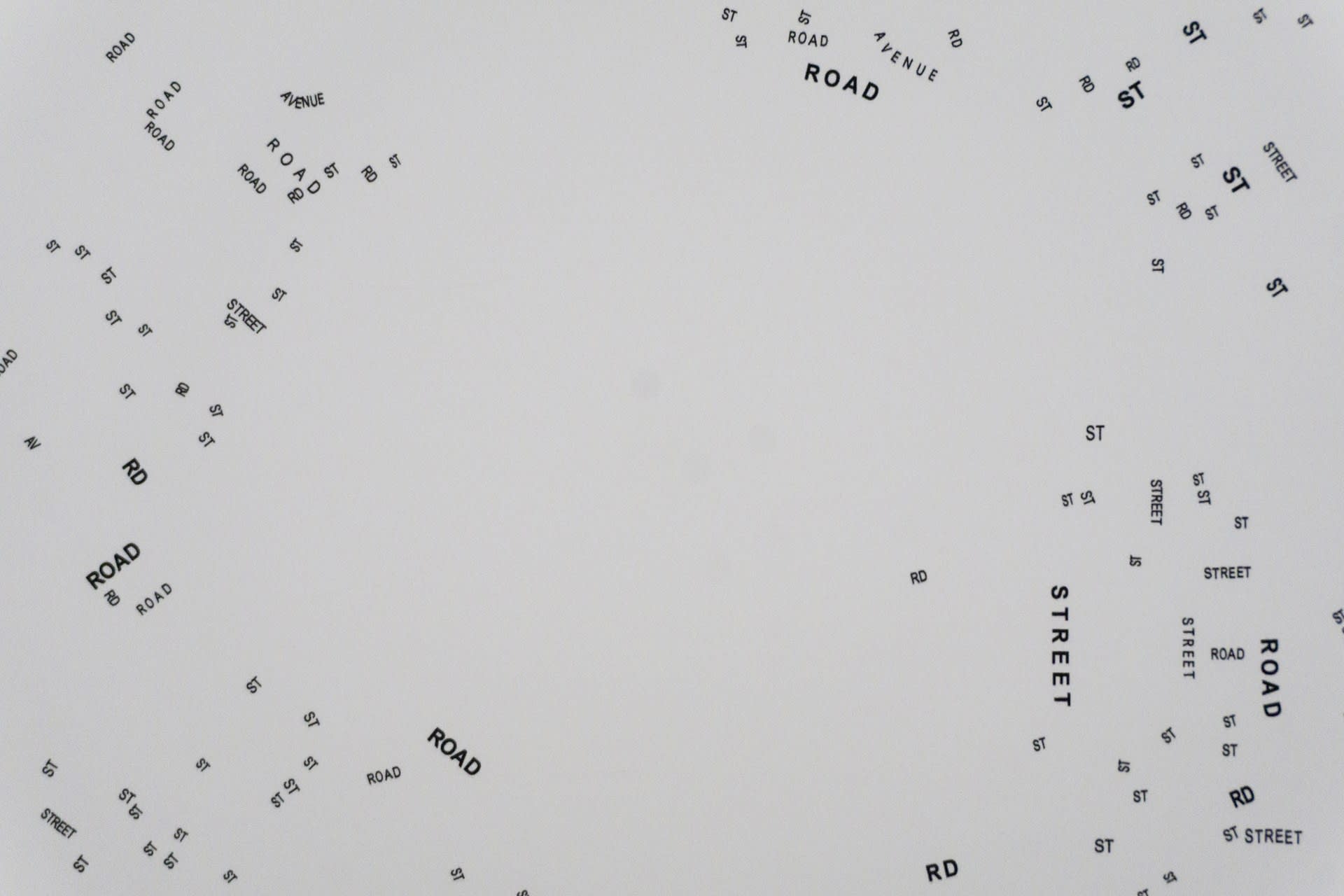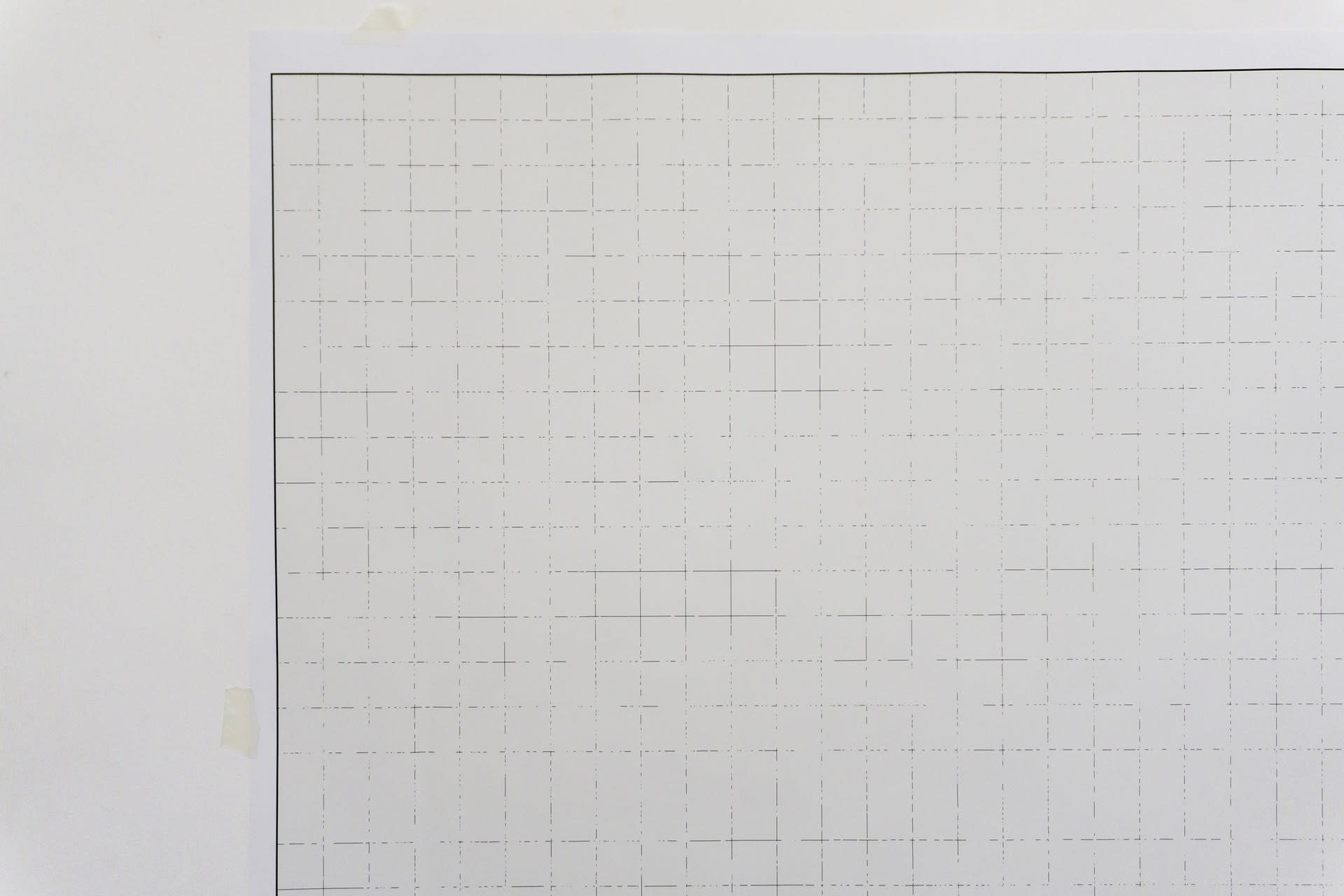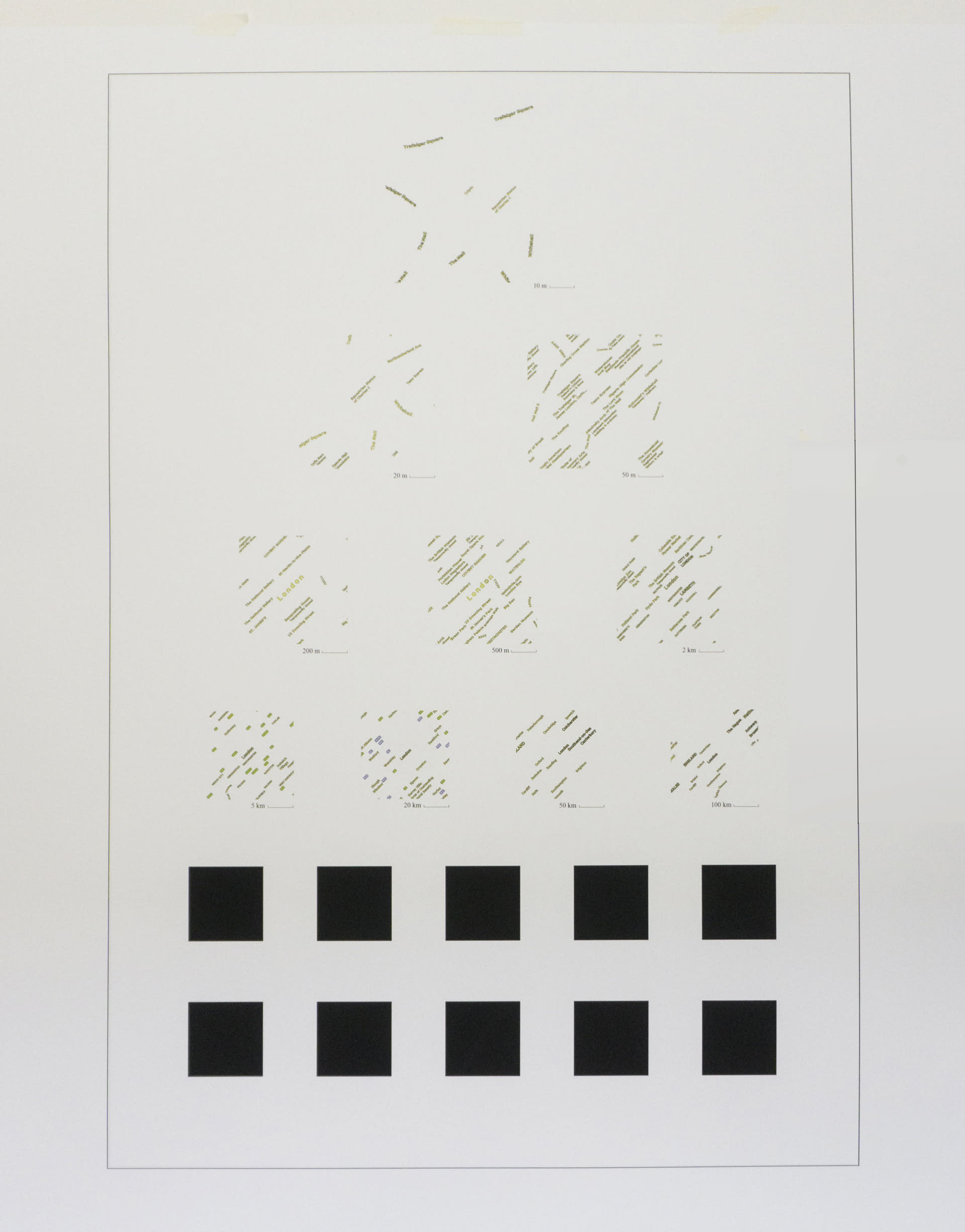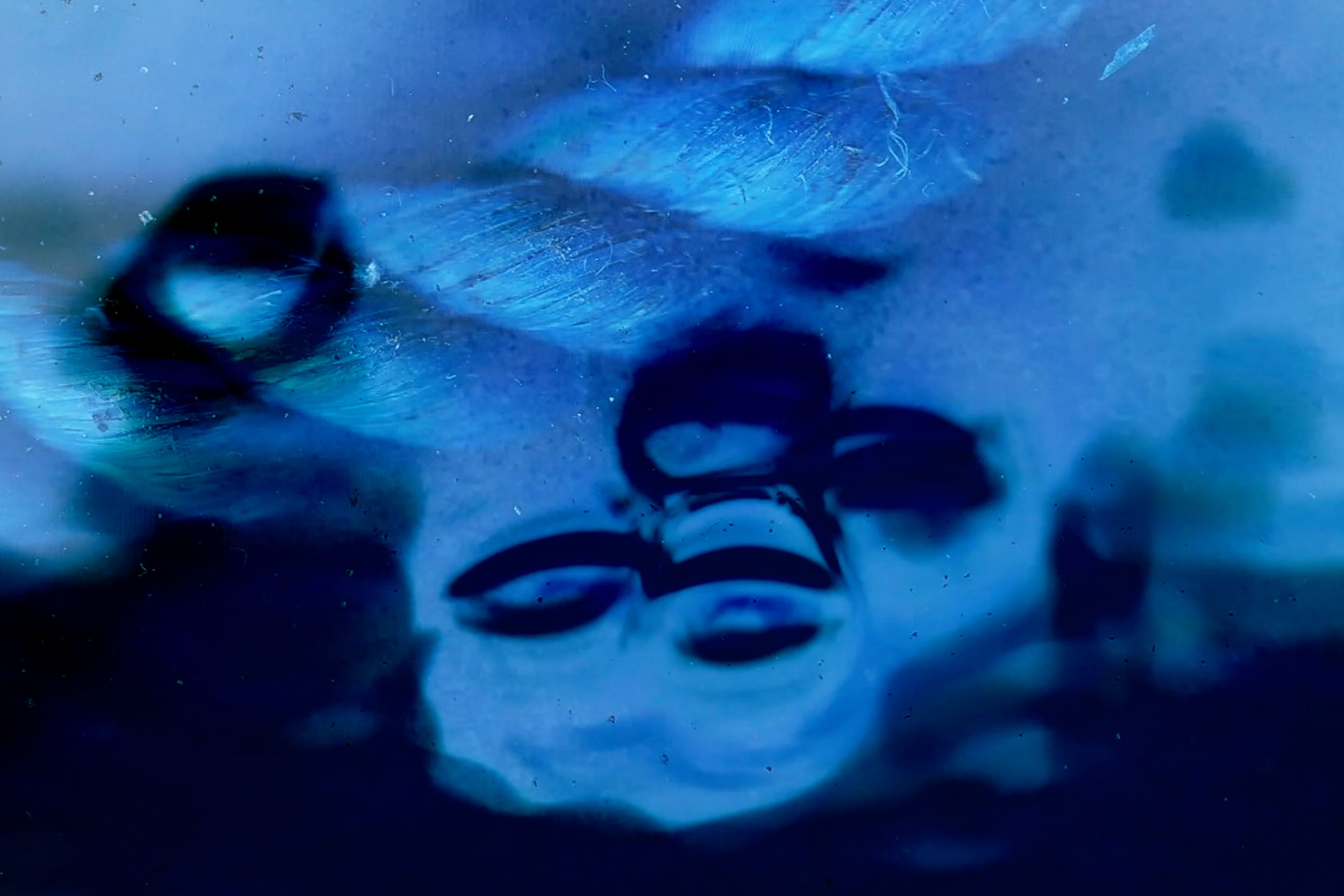This series of work is trying to investigate the visual aspect of map reading, including the question of how the visual codes make the map a highly effective subject for manipulation.
ROAD, RD, STREET, ST, AVENUE, AV: Like other graphic variables, the text suffix chosen could be designed variably by shape, size, typeface, angle, etc. Without the names of roads, avenues and streets, the map seems to lose its identifiability, while the individuality and uniqueness of each letter emerges.
Fragmentary Grid: When the grid becomes fragmental, the grid emerges. Grid lines are no longer continuous and infinite. However, unlike map symbols, the grid is not a representation of any specific reality in the physical space.
‘Eye Chart’: Imitating the visual form of an ‘eye chart’ to present changes in map scale and the selection of information, which would become a paradox. The size of the images, or rather, the scale of maps, continues to change, but the size of the letters remains the same.


![[untitled]](https://res.cloudinary.com/rca2020/image/upload/f_auto,h_1358,w_1920,c_fill,g_auto,q_auto/v1/rca2021/60c623e6101fec8c9f468432-299027?_a=AXAH4S10)
![[untitled]](https://res.cloudinary.com/rca2020/image/upload/f_auto,h_1280,w_1920,c_fill,g_auto,q_auto/v1/rca2021/60c623e6101fec8c9f468432-894614?_a=AXAH4S10)
![[untitled]](https://res.cloudinary.com/rca2020/image/upload/f_auto,h_1280,w_1920,c_fill,g_auto,q_auto/v1/rca2021/60c623e6101fec8c9f468432-589079?_a=AXAH4S10)
![[untitled]](https://res.cloudinary.com/rca2020/image/upload/f_auto,h_1280,w_1920,c_fill,g_auto,q_auto/v1/rca2021/60c623e6101fec8c9f468432-582365?_a=AXAH4S10)
![[untitled]](https://res.cloudinary.com/rca2020/image/upload/f_auto,h_1280,w_1920,c_fill,g_auto,q_auto/v1/rca2021/60c623e6101fec8c9f468432-691589?_a=AXAH4S10)
![[untitled]](https://res.cloudinary.com/rca2020/image/upload/f_auto,h_1358,w_1920,c_fill,g_auto,q_auto/v1/rca2021/60c62b31101fec8c9f5081f4-686667?_a=AXAH4S10)
![[untitled]](https://res.cloudinary.com/rca2020/image/upload/f_auto,h_2560,w_1707,c_fill,g_auto,q_auto/v1/rca2021/60c63f87101fec8c9f694aed-738175?_a=AXAH4S10)
![[untitled]](https://res.cloudinary.com/rca2020/image/upload/f_auto,h_1080,w_1920,c_fill,g_auto,q_auto/v1/rca2021/60c63f87101fec8c9f694aed-803331?_a=AXAH4S10)
![[untitled]](https://res.cloudinary.com/rca2020/image/upload/f_auto,h_1280,w_1920,c_fill,g_auto,q_auto/v1/rca2021/60c63f87101fec8c9f694aed-69307?_a=AXAH4S10)
![[untitled]](https://res.cloudinary.com/rca2020/image/upload/f_auto,h_1280,w_1920,c_fill,g_auto,q_auto/v1/rca2021/60c63f87101fec8c9f694aed-527763?_a=AXAH4S10)
![[untitled]](https://res.cloudinary.com/rca2020/image/upload/f_auto,h_1280,w_1920,c_fill,g_auto,q_auto/v1/rca2021/60c63f87101fec8c9f694aed-727587?_a=AXAH4S10)
![[untitled]](https://res.cloudinary.com/rca2020/image/upload/f_auto,h_2560,w_1281,c_fill,g_auto,q_auto/v1/rca2021/60c63f87101fec8c9f694aed-461279?_a=AXAH4S10)
